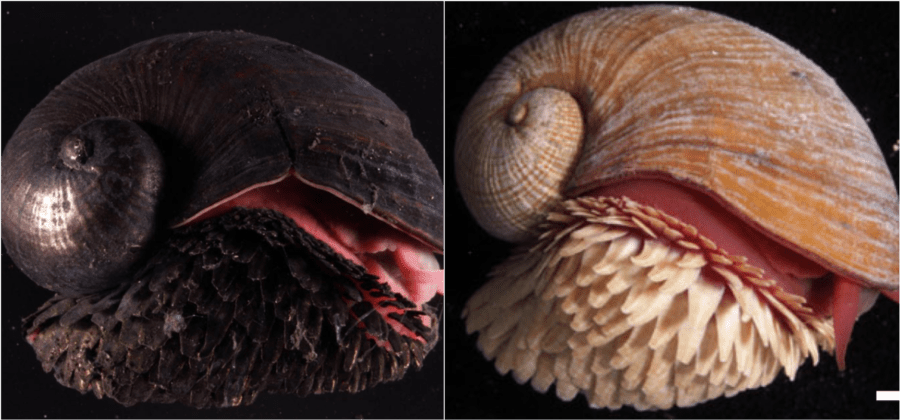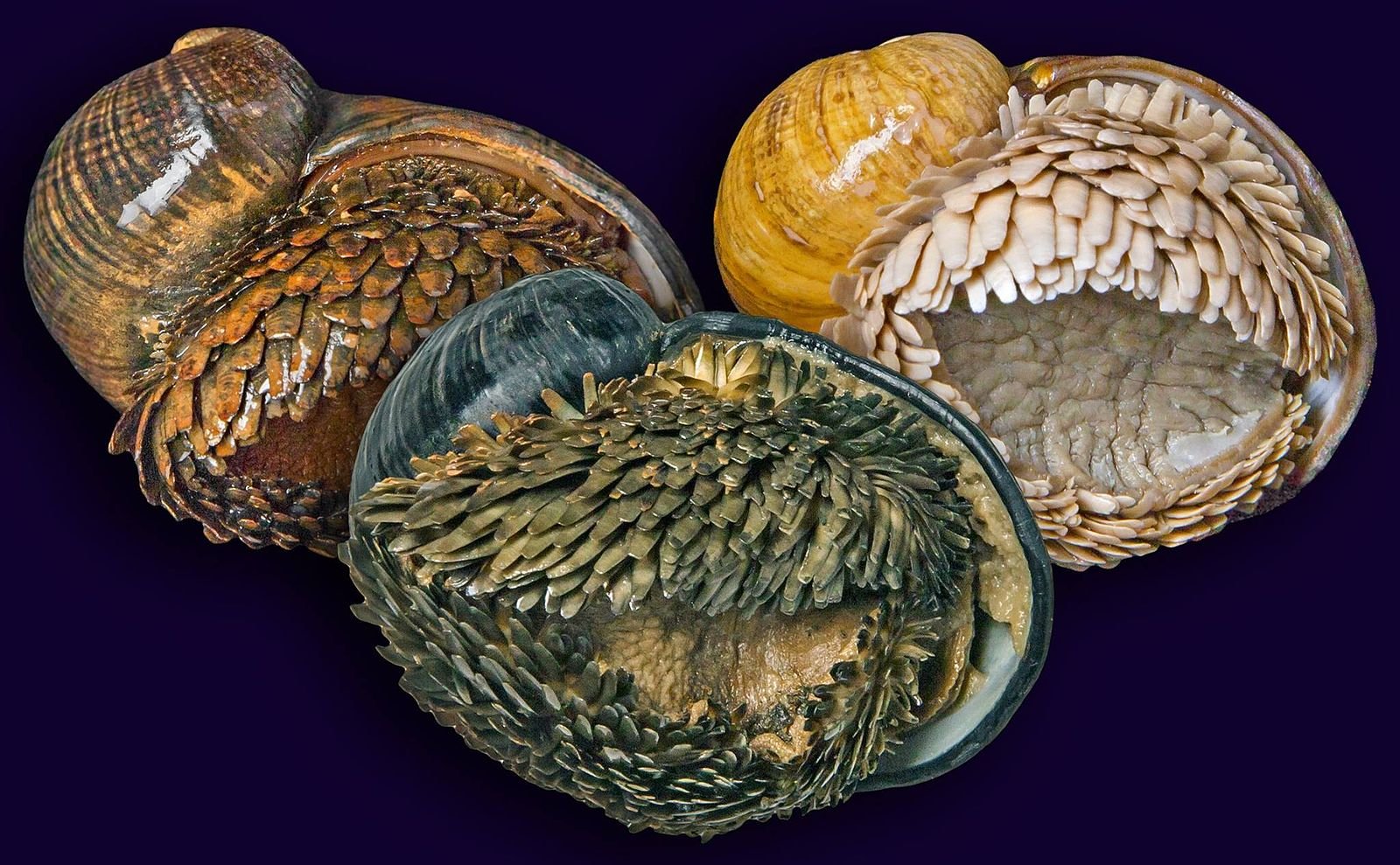The scaly-foot snail’s shell is made of actual iron – and it’s magnetic

Known as the pangolin of the sea, this is one of the most metal animals on Earth.
The scaly-foot snail (Chrysomallon squamiferum) is found in the Indian Ocean in hydrothermal vents – fissures in the seafloor, often found near volcanically active places, that eject warm water that’s been heated by molten rock deep below the ocean crust. It lives between depths of 2,400 to 2,900 metres and can withstand temperatures of up to 400 degrees Celsius.
The species has so far only been found in three hydrothermal vents, the total area of which is roughly equivalent to the size of just two American football fields. And, strangely enough, they look very different depending on which vent they reside in.
As pictured above, the black scaly-foot snail was found in the Kairei vent field, located on the Central Indian Ridge, about halfway between Australia’s westernmost coast and east Africa.
The white snail pictured above was found about 700 km away from the Kairei vents, in the Solitaire vent field.
Scaly-foot snails have also been found in the Longqi vent field, which lies some 2,500 km away from Solitaire. Here’s an image of individuals found in the Longqi (gold), Kairei (black) and Solitaire (white) vents:

These different colours are produced as a result of different chemical compositions in the hydrothermal water at each of the vent fields.
In addition to the iron-sulphide compounds that the snails take up from the water to form their shells and plates, they also take up chemicals such as pyrite (also known as fool’s gold) and gregite.
The ratio of such chemicals in the Longqi vent water, for example, gives the snails a darker colouration than the Solitaire snails’, but lighter than the Kairei snails’.
Amazingly, by incorporating deposits of gregite into their exoskeletons, scaly-foot snails make themselves magnetic.
While scientists aren’t exactly sure how these snails use chemicals in the water to construct their armour, they think the reason they do it is to ward off predators such as crabs, which also known to congregate in hydrothermal water.
Unfortunately, scaly-foot snails have more to worry about than hungry crustaceans – they are first animal to become officially endangered due to the threat of deep-sea mining.
Because hydrothermal vents are rich in minerals and metals, they are of great interest to mining companies, which might soon be given the green light to start commercial deep-sea mining.
“If active hydrothermal vents were protected against the threat of deep-sea mining, the endangered status of the sea pangolin could be lifted,” Julia Sigwart from the Queen’s University Marine Laboratory in Belfast writes for The Conversation.
Here’s some rare footage of these wonderful creatures, showing off their formidable armour:

